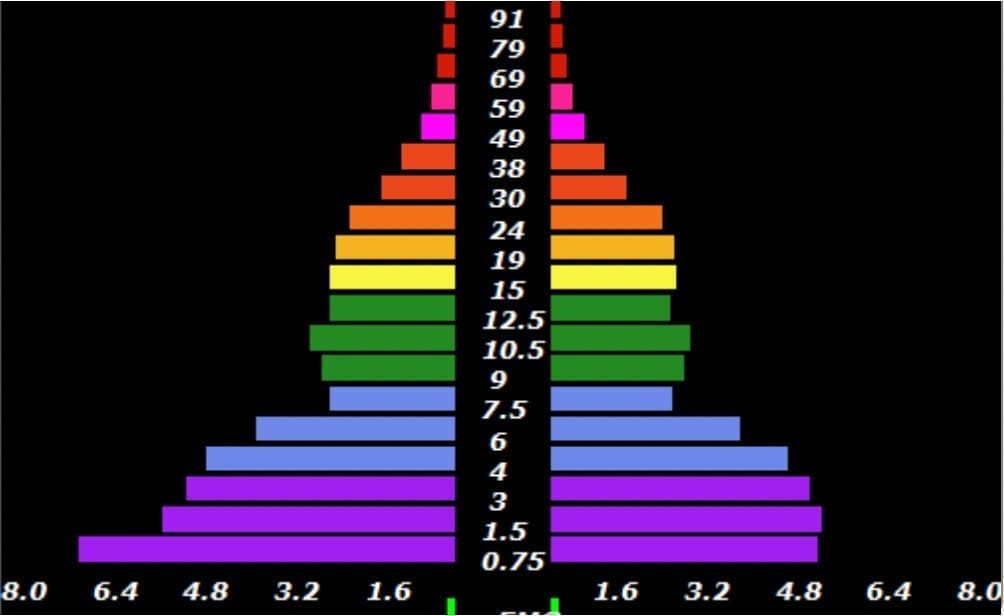

Self-Erasure
The Silent Opposite of Self-Respect
The One Who Traded Truth for Harmony to Keep the Peace
I think we’ve all been there.
You’re told it’s about affirmation, about saying no.
But you still say yes even when your entire body is screaming no.
At work, with your boss, with your colleague.
With a friend.
For family.
No matter where it is, the pattern is the same: you give, you bend, you erase a little piece of yourself.
And deep down, it’s about pleasing.
It's about proving.
It’s about being loved.
As if love was a currency: if I give enough, maybe I’ll receive.
What I’ve discovered is this: I often knew I was pushing my boundaries. My mistake was believing others would respect them.
They won’t.
Not because they’re cruel, but because people take what they can.
They don’t see your exhaustion.
They don’t see the stress running inside.
They don’t feel the ache in your body that says, “enough.”
We all see life through our own lens.
It’s rare to meet someone who truly notices when you’re at your limit. Even rarer for someone to hold your boundary for you when you can’t.
That’s when self-erasure begins: the moment you wait for others to respect limits you’re not enforcing.
And it doesn’t happen in one dramatic decision.
It happens slowly.
Every small “yes” against your truth.
Every silent compromise.
Every time you perform safety instead of living it.
That’s how presence disappears.
Not by accident.
By erasure.
When the Brain Turns Down Its Own Volume
In self-erasure, the brain doesn’t fight chaos; it dims itself to survive it.
On EEG, the slow waves at the bottom—Delta and Theta—stretch wide and heavy, while the faster ones that keep us alert—Alpha and Beta—shrink almost out of sight.
To a specialist, it looks like a simple graph, but to the person living inside it, it feels like moving through fog. The mind drifts, the body slows, emotions feel far away. Delta, meant for deep rest and grounding, takes over the day. Theta, the realm of imagination and memory, pulls awareness inward. With Alpha too weak to bridge inside and outside, reality loses its edges. You can function—talk, smile, work—but a part of you is always half-asleep, protecting itself from stimulation it once couldn’t bear.

This is what “numb” looks like in frequency form: a nervous system that has turned the lights low so nothing hurts too much. Healing isn’t about forcing energy back up; it’s about rebuilding the bridge. As Alpha grows stronger, clarity returns; as Beta wakes gently, presence follows. The person who seemed distant or slow isn’t disinterested—they’re re-learning how to exist at full volume without shattering.
How the Erasure Was Born
No one decides to vanish.
It happens slowly. Beneath smiles, between apologies, in the long pauses where you swallow the truth before it leaves your mouth.
You learned early that honesty could change the temperature of a room.
That being real could cost you belonging.
So the body made a deal: “I’ll keep us safe by keeping us quiet.”
At first, that silence feels graceful.
It keeps the peace. It earns approval. It buys affection.
But every agreement you make against yourself carves a small absence inside you.
Until what’s left looks calm on the outside and hollow on the inside.
Self-erasure isn’t born from weakness.
It’s born from sensitivity that wasn’t met with safety.
From a child who felt everything and realized that authenticity could scare love away.
So you learned to smooth your edges.
You became easy to be around, reasonable, kind.
And the world rewarded you for it without ever noticing the cost.
From Harmony to Disappearance
At first, it looks like maturity.
You keep the peace, hold your tongue, and tell yourself you’re “choosing your battles.”
But inside, the nervous system is negotiating a quiet war.
Each small “yes” that betrays your truth sends a signal to the body:
Your feelings aren’t safe here.
The mind calls it diplomacy.
The body calls it self-abandonment.
Eventually, harmony stops being peace and becomes anesthesia.
You stop noticing your own preferences.
You adapt faster than you feel.
You apologize before you’ve done anything wrong.
That’s not balance. It’s erasure dressed as empathy.
The same intelligence that once kept you safe now keeps you invisible.
Your nervous system still thinks silence equals survival.
The Several Masks (Sub-Archetypes) of Self-Erasure
Self-erasure never announces itself. It hides behind virtues the world praises:
The Pleaser—love through compliance.
If I agree, I’ll be safe.The Peacemaker—calm through silence.
If I don’t react, no one will leave.The Adapter—worth through flexibility.
If I fit every shape, I’ll never be rejected.The Performer—approval through perfection.
If I make them proud, maybe I’ll exist.The Ghost—safety through absence.
If I disappear, at least I can’t disappoint.
Each mask says the same thing: “I’ll be whatever you need, as long as I don’t have to lose you.”
But the cost is always the same. You lose yourself instead.
The Cost of Disappearing
From the outside, you look easygoing.
Helpful. Reliable. “A good person.”
Inside, you’re a body that never exhales.
Every suppressed truth lingers like static in your nervous system.
Every unspoken need hums beneath the skin, looking for an exit.
The cost doesn’t come all at once.
It seeps through headaches, fatigue, and a throat that tightens when you try to speak.
You start forgetting simple things.
You call it burnout, but it’s grief. The grief of self-betrayal repeated until the body starts mourning the person it used to be.
Because that’s the secret of self-erasure: it looks like peace, but it’s the body preparing for collapse.
You can only compress your truth for so long before the cells revolt.
And when they do, no affirmation, no yoga pose, no productivity hack can drown out the message:
“You can’t keep disappearing and still expect to feel alive.”
When the Body Says Enough
One day, your body stops cooperating.
You try to smile, but your chest aches.
You reach for words and find silence instead.
You wake up already tired, no matter how long you slept.
This isn’t failure. It’s a reclamation.
The system that once prioritized harmony over truth finally refuses to play along.
The muscles that held your “yes” too long start trembling.
Tears come without permission, and for once, you don’t apologize.
That’s the moment of rupture. The line between pretending and presence.
The nervous system is saying: You’re safe enough to stop negotiating your own disappearance.
It feels like chaos because freedom always does at first.
But underneath the shaking, something pure stirs: a small, steady signal pulsing through your body, whispering: I still remember who you are.
Relearning Boundaries & Presence
Healing from self-erasure isn’t about becoming louder.
It’s about becoming honest.
Every time you speak your truth without explaining it, the nervous system learns a new equation:
truth = safety.
Every small “no” that honors your limit rewires the body’s memory.
Boundaries stop being defenses and become declarations of existence.
At first, it feels awkward.
You’ll shake. You’ll overexplain. You’ll doubt whether your needs are valid.
That’s normal. You’re teaching your body that peace doesn’t have to mean disappearance.
Presence grows from practice, not permission.
You don’t need anyone else to validate your line in the sand.
You just need to stand there long enough for your body to believe you’ll stay.
Meeting the One Who Disappeared
Eventually, the exhaustion softens.
The tears slow. The noise fades.
And in the quiet, you meet the one who started all this.
The child who learned that truth could make love vanish.
The one who kept smiling to keep the world intact.
The one who thought being agreeable meant being worthy.
They never wanted to disappear.
They just wanted to be safe and loved.
Now, you get to show them another way.
Not by forcing, not by fixing. By staying.
You place a hand over your heart and whisper what no one ever said:
“You don’t have to trade yourself for peace anymore.”
“Your truth is not a threat.”
“You can stay and still be loved.”
And for the first time, the body believes it.
The breath deepens. The spine lifts. The field recalibrates.
From silence to presence.
From peacekeeping to peace.
From disappearance to return.
You don’t need to earn space anymore.
You are the space.
From Absence to Resonance
Self-erasure isn’t a personality; it’s what happens when the system stays too long in low-frequency mode.
The brain lowers its speed to stay safe, turning life down to a whisper.
As Alpha strengthens again, presence comes back online: thought, emotion, movement, all in sync.
You start to feel real again, not because you forced it, but because your body finally believes it’s safe to exist.
Remember that you are the teacher.
You teach people how to treat you based on what you're willing to tolerate from them.

Small aligned no’s. Presence instead of performance. Truth instead of contortion.

ALIGNED!
Continue Your Journey
Every archetype holds a hidden intelligence, but awareness is what turns survival into wisdom.
If you’ve recognized yourself in this reflection, your path doesn’t end here:
Understand the Archetypes—Meet the other inner forces that shape your evolution and learn how they transform through awareness.
Explore the Spiritual Awakening Spiral (SAS)—Discover how each Gate burns illusion, restores coherence, and rebuilds truth in form.
Join the Kundalini Realignment Seminar—Experience a live recalibration designed to help your nervous system rebuild boundaries rooted in safety, not fear.
Each path deepens your return to yourself.
If you’re unsure where to begin, send me a message on WhatsApp, and I’ll help you find the right next step for where you are on your journey.
Written from live EEG and somatic field observations by Lila Devane, founder of The Brainwaves Method.

Noesis Delta | KvK: 98 71 54 88 | VAT: NL005349328B34 | Den Haag, The Netherlands
© Copyright 2024 noesisdelta.com - All rights reserved


